
Shrubs Around Las Vegas, Vegetation Around Las Vegas
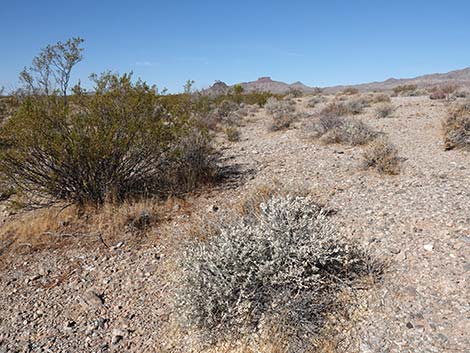 |
General: Spiny Hopsage (Grayia spinosa) is a fairly low-growing, densely bushy shrub with pointed stems that become spines. The leaves are generally small and variable in shape and size. This species is dioecious: male plants produce terminal, spike-like staminate inflorescences, while female plants produce seeds attached to leaf-like bracts that turn red with age. The seeds are attached to two, leaf-like bracts. Spiny Hopsage is a fairly common component of desert vegetation communities in drier areas along washes, on bajadas, and into the lower mountains in the Lower Sonoran (Creosote-Bursage Flats) and Upper Sonoran (Mojave Desert Scrub) life zones. Family: Goosefoot (Chenopodiaceae). |
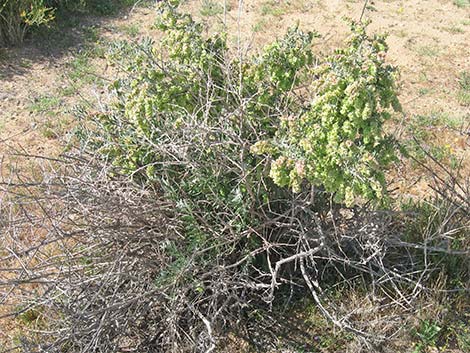 |
Plant Form: Upright, brushy shrub with spine-tipped branches. Height: To about 3 feet. Stems: Branches many, stiff; bark gray; twigs become spine-like. Leaves: Deciduous; blade tiny to 1.5 inches, elliptic to oblanceolate; flat to fleshy, entire; petiole short. Flowers: Male and female plants separate. Male plants produce small, terminal, spike-like staminate inflorescences; flower with 4 lobes, 4 stamens. Female plants produce pistillate inflorescences that grow along the outer stems and produce seeds attached to leaf-like bracts (2 bractlets) that turn red with age. |
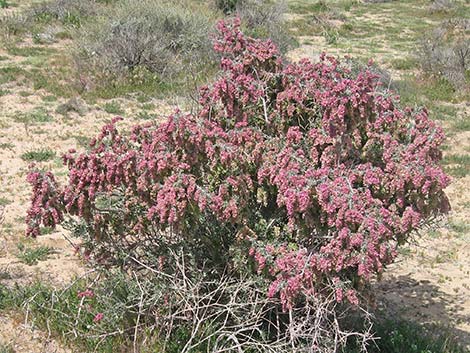 |
Seeds: Attached to bracts. Habitat: Dry, desert areas with sandy or gravelly soils. Elevation: About 1,500 to 9,000 feet; about 3,000 to 5,000 in southern Nevada. Distribution: Western North America. Comments: This is the only species in the genus Grayia. |
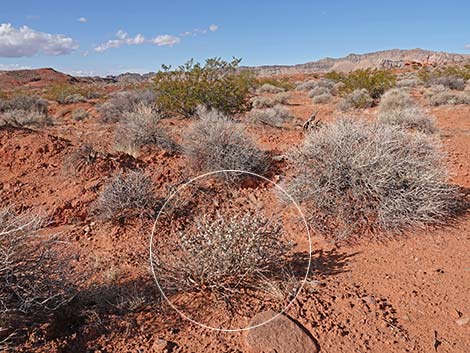 |
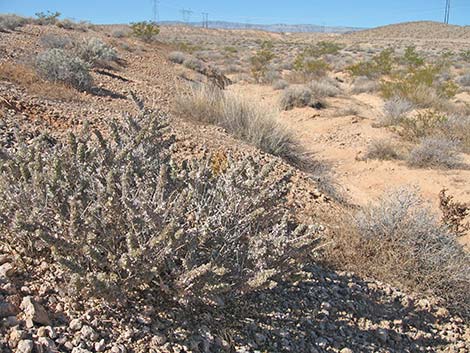 |
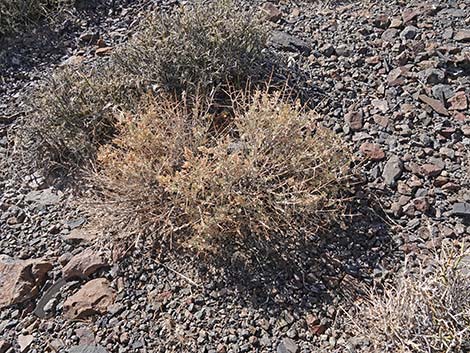 |
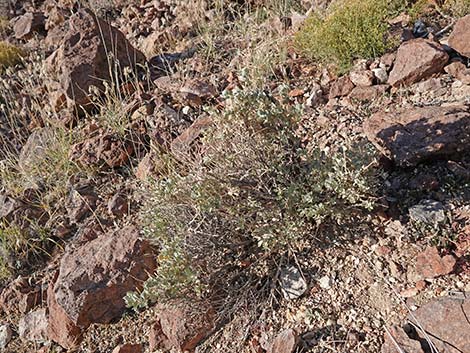 |
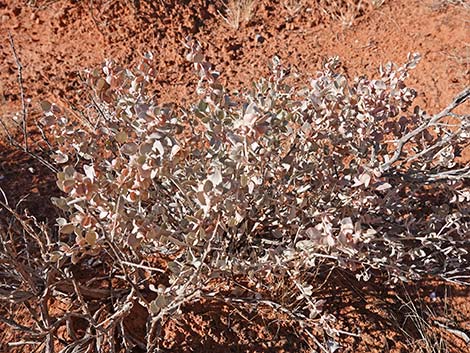 |
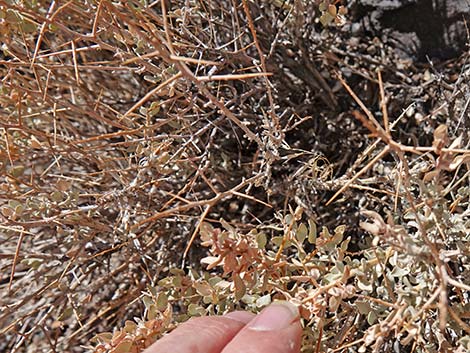 |
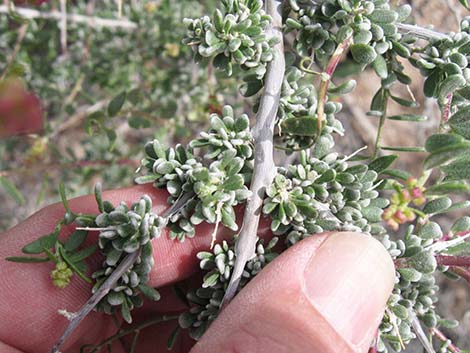 Leaves are variable on same plant: leaves here are small and fleshy... |
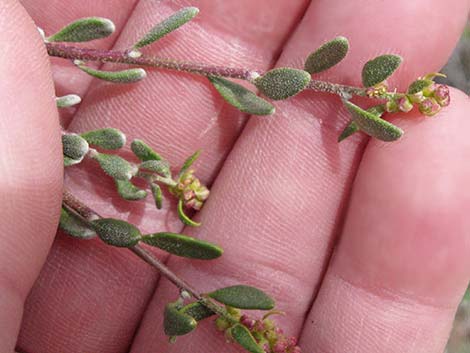 ... but on same plant, these leaves are larger and flatter |
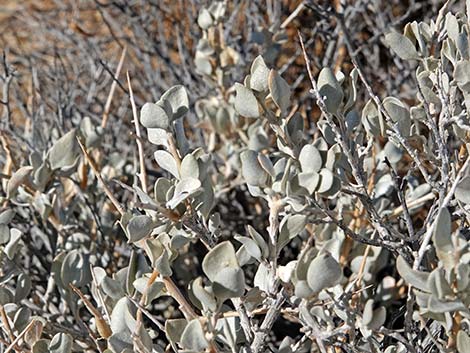 Typical, gray, rounded leaves |
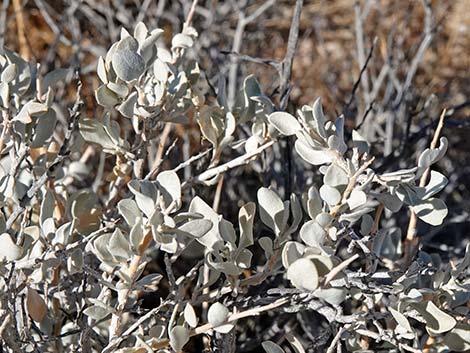 Typical, gray, rounded leaves |
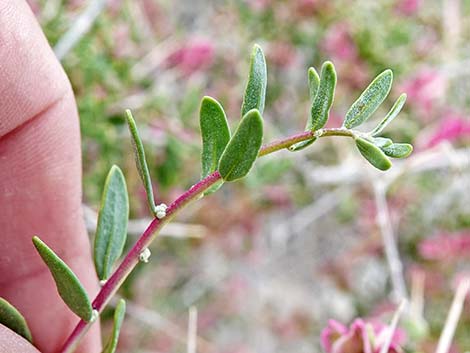 Fresh growing stem lax with elongate leaves |
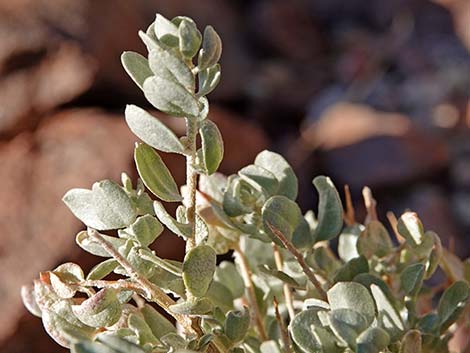 Older stem stiffer with more rounded, more gray leaves |
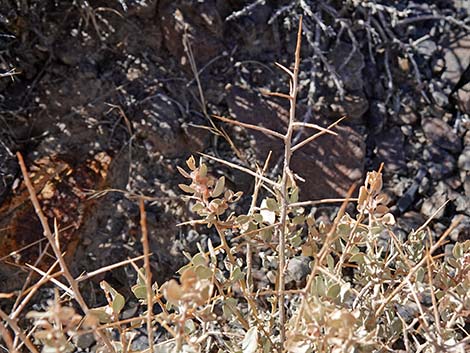 Stems with thorny tips |
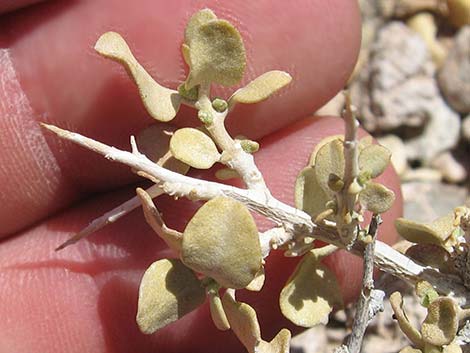 Stem with thorny tip |
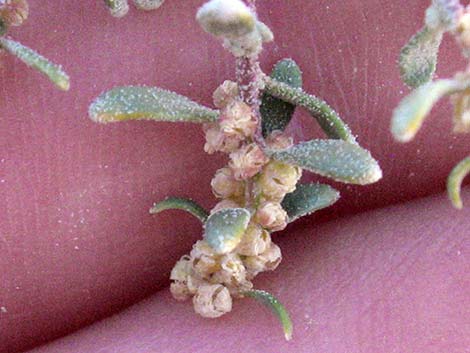 Staminate (male) inflorescences; flower with 4 lobes, 4 stamens |
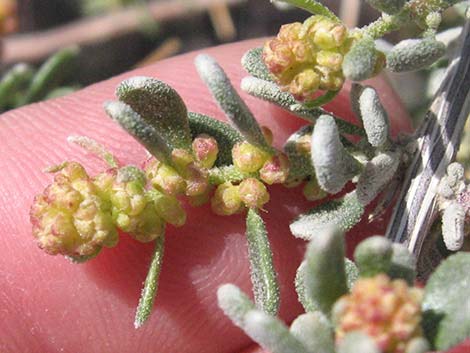 Young pistillate (female) inflorescence |
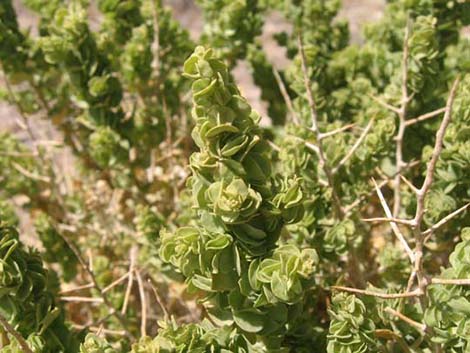 Female plant with developing fruits |
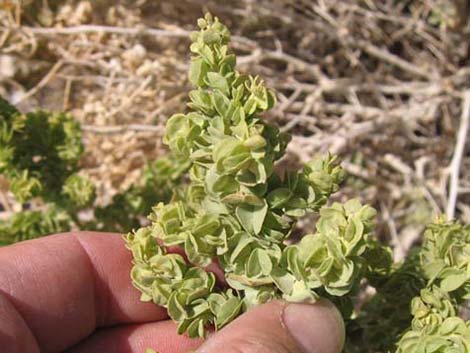 Female plant with developing fruits |
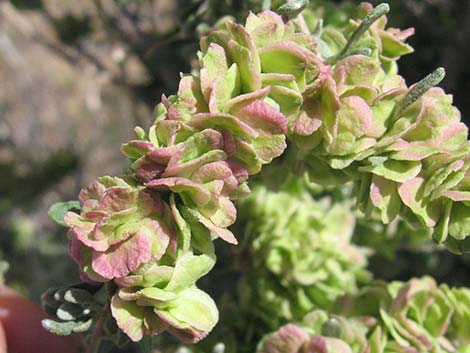 Developing pistillate (female) inflorescences |
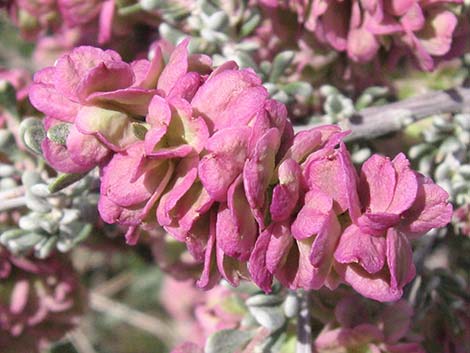 Older pistillate (female) inflorescences: bracts turn red with age |
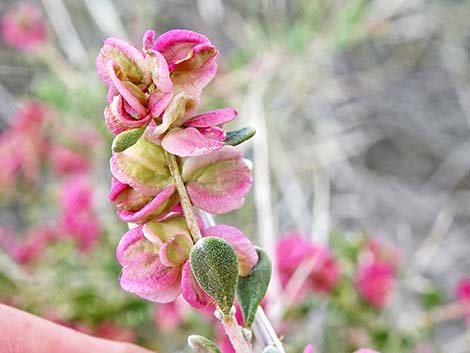 |
 |
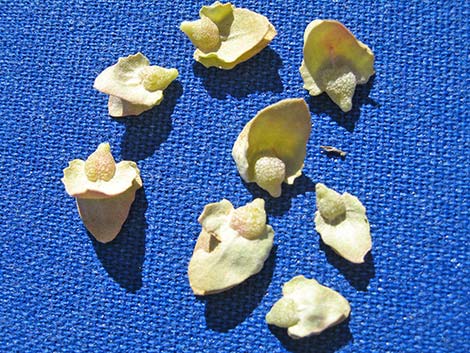 Seeds attached to leaf-like bracts (2 bractlets each) |
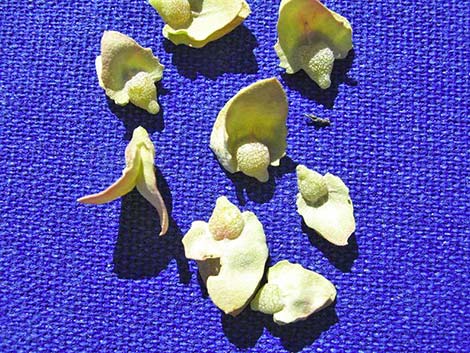 Seeds attached to leaf-like bracts (2 bractlets each) |
Note: All distances, elevations, and other facts are approximate. Names generally follow the USDA database.
![]() ; Last updated 240625
; Last updated 240625
| All Shrubs | Plant Species Index | Glossary | Copyright, Conditions, Disclaimer | Home |